
Innovative solution for Adaptive radiotherapy
Aurora-RT combines a linear accelerator (Linac), with real-time (concurrent) Magnetic Resonance imaging to deliver cost effective adaptive radiotherapy to cancer patients.
Aurora MR Linac
Addressing the issues of legacy systems
1st generation systems are plagued by design shortcomings
• Perpendicular magnetic field to the beam impacts treatment quality
• High power MRI in connection with perpendicular field generate ERE and ESE
• Closed circular MR creates claustrophobia and tunnel effect
• Bores of small diameter increase patient unease
• No tangential treatment (no couch lateral move)
• High temperature MR require liquid helium and quenching
• High power MRI in connection with perpendicular field generate ERE and ESE
• Closed circular MR creates claustrophobia and tunnel effect
• Bores of small diameter increase patient unease
• No tangential treatment (no couch lateral move)
• High temperature MR require liquid helium and quenching
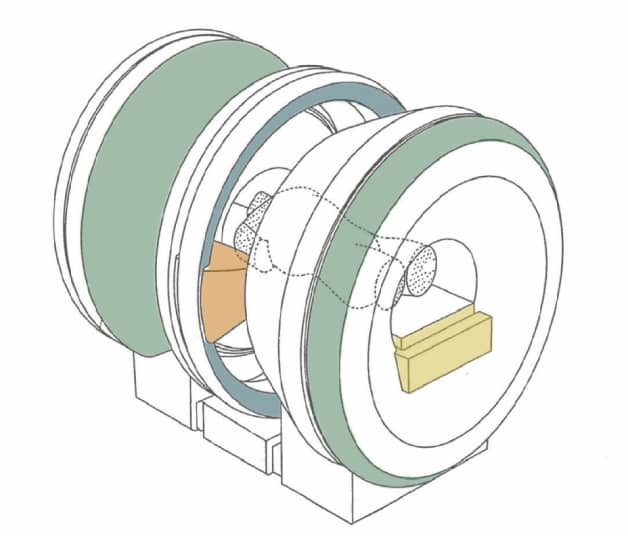
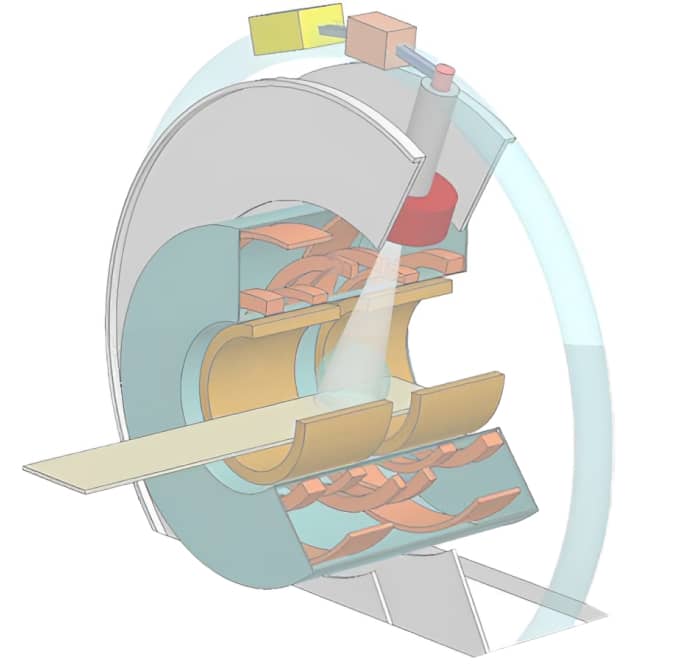
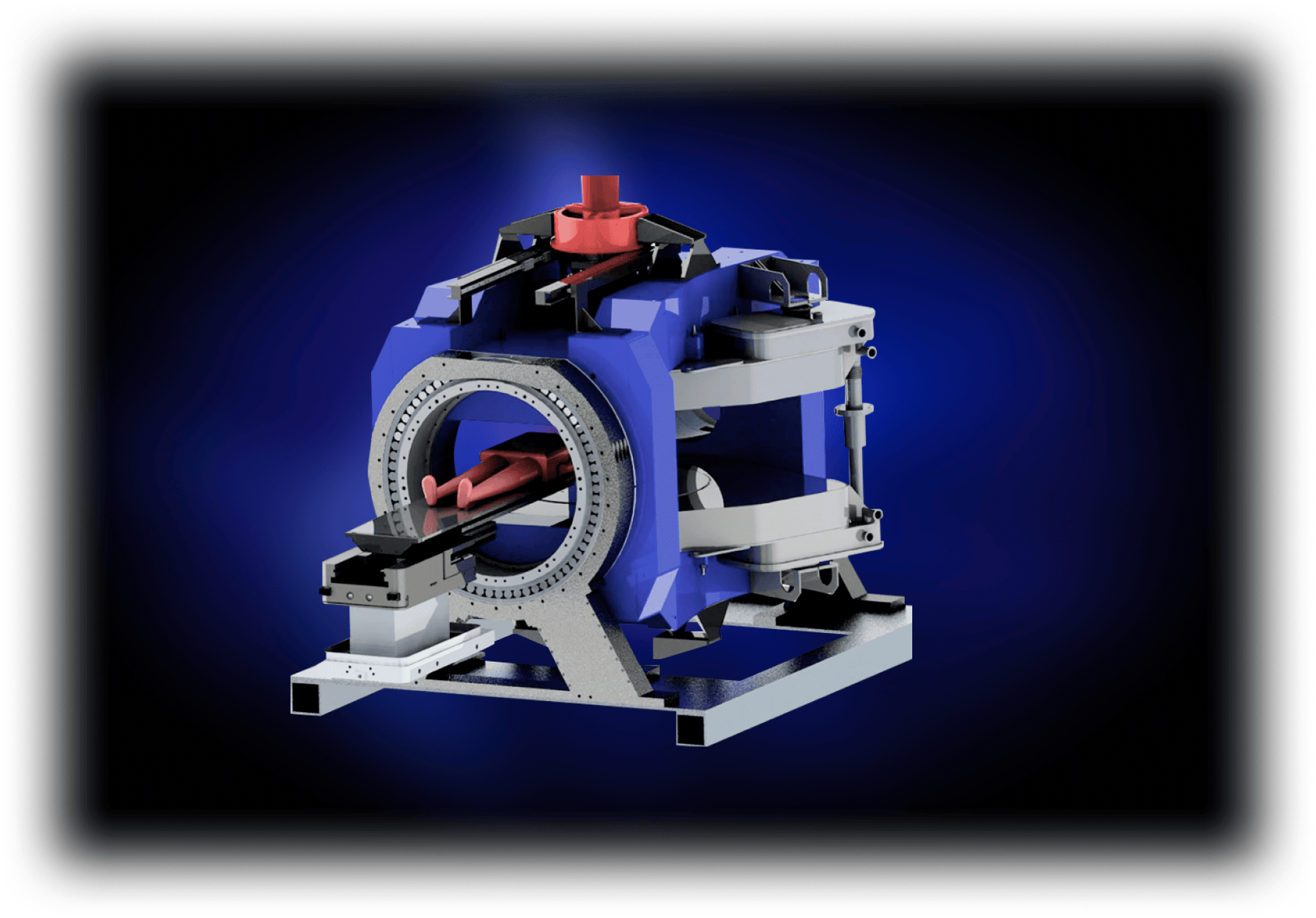

• Innovative open bi-planar superconductive MR
• Room temperature MR, no liquid helium and no quenching
• Robust 6 MV Linac
• 120 leaf high performance MLC
• Largest bore 110 W 60 H
• Rotating Linac with the 360 gantry, beam eye imaging
• Real time adaptive planning
• TPS agnostic, no dedicated MRI TPS
• Beam modulation, VMAT and IMRT
• Standard bunker, through the maze installation
• Unique high throughput, 15-30 patients per day
• Gating and tracking available at launch
• Room temperature MR, no liquid helium and no quenching
• Robust 6 MV Linac
• 120 leaf high performance MLC
• Largest bore 110 W 60 H
• Rotating Linac with the 360 gantry, beam eye imaging
• Real time adaptive planning
• TPS agnostic, no dedicated MRI TPS
• Beam modulation, VMAT and IMRT
• Standard bunker, through the maze installation
• Unique high throughput, 15-30 patients per day
• Gating and tracking available at launch
• No ERE, no ESE
• Optimum Contrast to Noise ratio
• Large Patient Opening 110 x 60 cm Bore
• Dedicated non obstructive coils
• Ability to make lateral shifts to treat tangentially
• Open magnet minimizes claustrophobia
• No helium gas, no quenching, no refill
• Easy turn off for servicing
• Optimum Contrast to Noise ratio
• Large Patient Opening 110 x 60 cm Bore
• Dedicated non obstructive coils
• Ability to make lateral shifts to treat tangentially
• Open magnet minimizes claustrophobia
• No helium gas, no quenching, no refill
• Easy turn off for servicing
The new generation MRI guided Linac
AURORA RT: Parallel LINAC-MRI
Addressing the issues of legacy systems
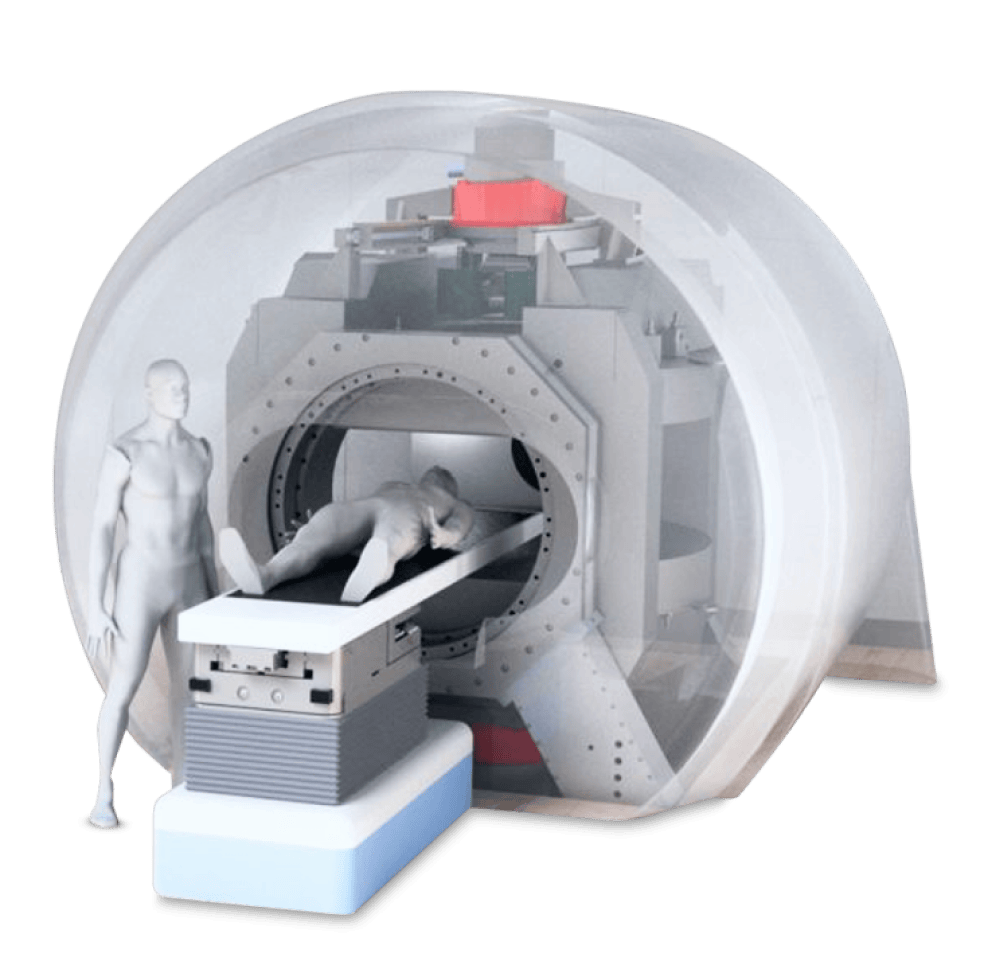
Aurora RT, parallel, open, super conducting 0,5 Tesla magnet

Optimal magnetic field strength, 0,5 Tesla
Opportunities in Interventional and Diagnostic Imaging by Using High-Performance Low-Field-Strength MRI
Optimal magnetic field strength, 0,5 Tesla
Adrienne E. Campbell-Washburn, PhD • Rajiv Ramasawmy, PhD • Matthew C. Restivo, PhD • Ipshita Bhattacharya, PhD • Burcu Basar, MSc • Daniel A. Herzka, PhD • Michael S. Hansen, PhD • Toby Rogers, BM BCh, PhD • W. Patricia Bandettini, MD • Delaney R. McGuirt, BSc • Christine Mancini, RT (R)MR • David Grodzki, PhD • Rainer Schneider, PhD • Waqas Majeed, PhD • Himanshu Bhat, PhD • Hui Xue, PhD • Joel Moss, MD, PhD • Ashkan A. Malayeri, MD • Elizabeth C. Jones, MD • Alan P. Koretsky, PhD • Peter Kellman, PhD • Marcus Y. Chen, MD • Robert J. Lederman, MD
Radiology 2019; 293:384–393 Source
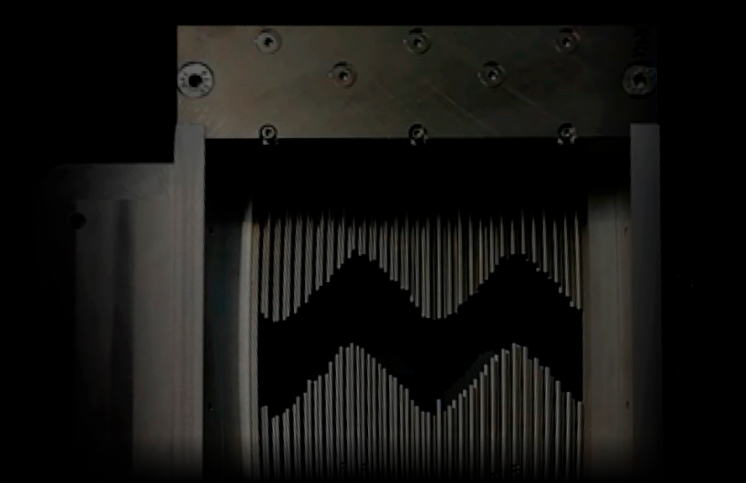
— 120 Leaf
— 0.5 cm Leaves
— Double Focus
— 0.5 cm Leaves
— Double Focus
Minimum beam leakage and optimized conformality
The outstanding design of the Aurora RT's 120 MLC
The
DESIGN
AURORA
RT'S
120
MLC
OF
THE
OUTSTANDING
The Aurora RT™ can move patients’ side to side (laterally) allowing the treatment of peripheral tumors resulting in less damage to healthy tissue and a more accurate treatment.
The ability to laterally adjust a patient is crucial to treat all types of cancer in an efficient manner, broadening the clinical scope of Aurora RT
Significant improved precision will allow additional clinical indications that are conventionally treated with radiation while reducing the side effects.
Standard breast treatments and peripheral tumors
Standard
TREATMENTS
PERIPHERAL
TUMORS
AND
BREAST
Highest quality real time MR imaging during beam delivery
Highest
REAL
IMAGING
BEAM
DELIVERY
DURING
TIME
MR
QUALITY
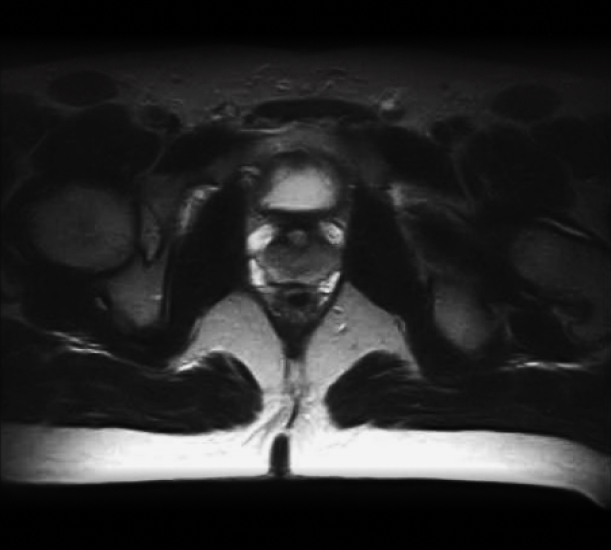

Our 0.5 T MRI
Cone Beam CT
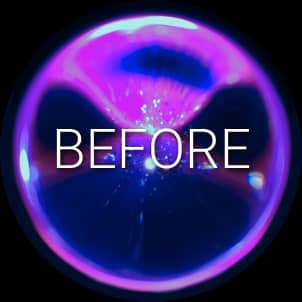


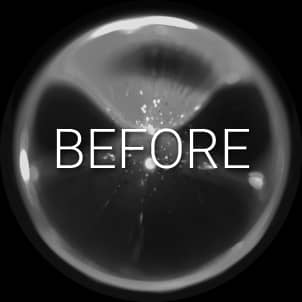

The Aurora RT™ can treat both parallel and perpendicular orientations
Instead of just perpendicular with conventional cylindrical MR systems
Perpendicular configuration
Parallel configuration
Magnet Pole
Treatment beam
Linear accelerator
Peripheral treatment capability
Peripheral
TREATMENT
CAPABILITY
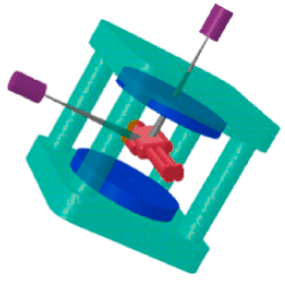



Technical Specifications
Technical
SPECIFICATIONS
Linac Energy
6 MV
MultiLeaf Collimator (MLC)
120 Leaves (standard, micro)
MR
0.5T
Patient Opening(braces)
110 cm W x 60 cm H
Linac-MR Configuration
Aligned – Rotate Together
MR Position
Rotates 360 degrees
Beam-Orientation
Parallel to Magnetic Field (minimal dosimetric perturbation)
Bunker and Maze Size
Standard for Linacs (installation through maze)
MR Cryogens and Venting
None Required
Beam Modulation
IMRT, VMAT
Soft-tissue Imaging Rate
Four images per sec
Treatment Planning
Real-time Adaptive
Install Without Need to Remove Wall or Ceiling
No cryogens (helium), no cryogen vent required
No cryogens (helium), no cryogen vent required
Room size:
0.5T Magnet
To be submerged in floor by 0.3 M
60 cm (net) bore
Depth: 5.9 M
Width: 5.9 M
Height: 3.6 M
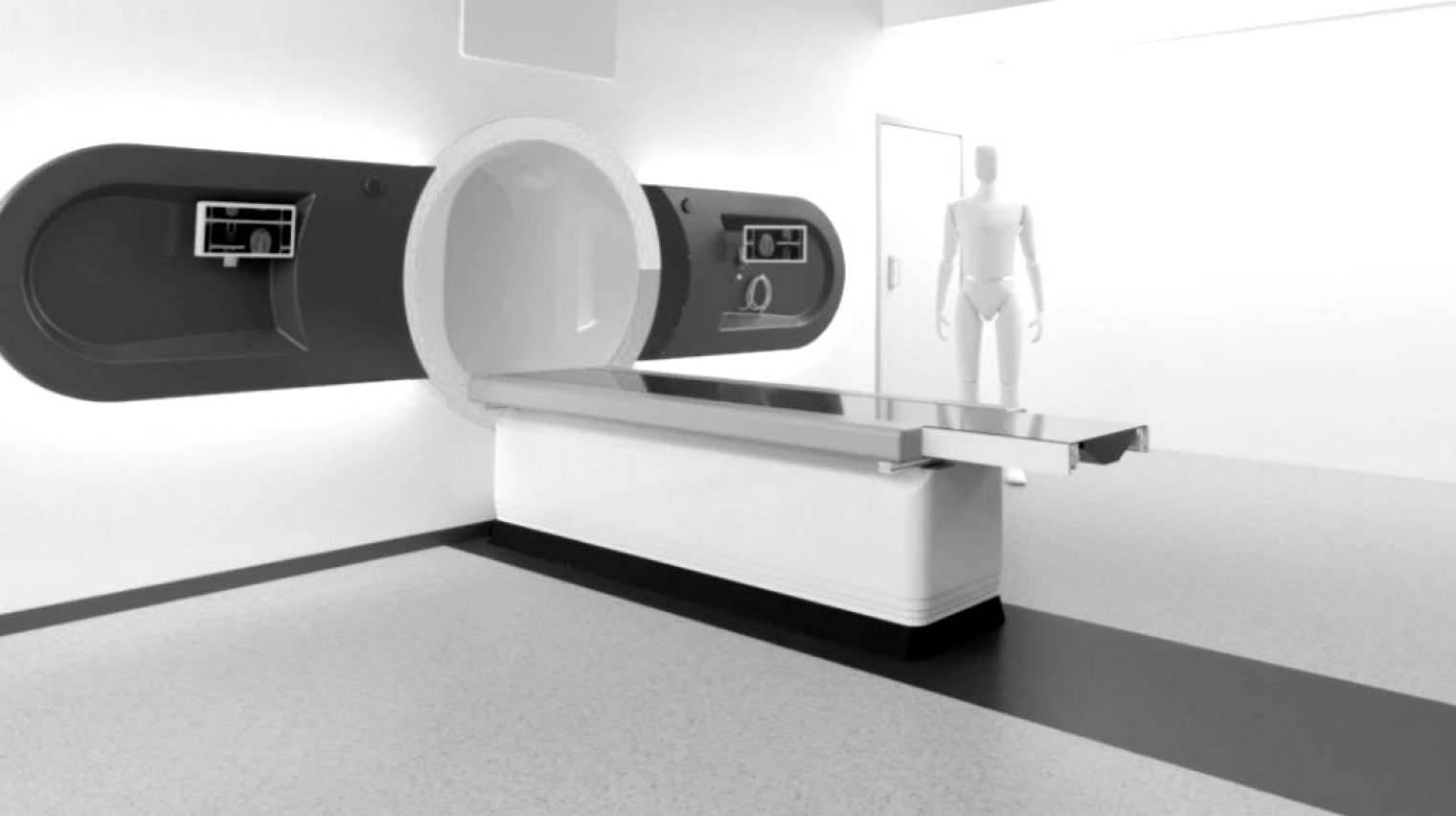
No claustrophobic feeling
Shorter time of treatment
Reduced side effects
Effective treatment of all moving organs
Shorter time of treatment
Reduced side effects
Effective treatment of all moving organs
For Patients
For Health System
Higher quality treatment
More patients treated
Reduced waiting lists
More patients treated
Reduced waiting lists
For the Government
Higher patient throughput drives reduced cost per treatment
Higher accessibility for more patients
Reduced capital investment
Creation of more treatment facilities
Higher accessibility for more patients
Reduced capital investment
Creation of more treatment facilities
BENEFITS



Aurora-RT Mr-Linac
Mr-Linac X
Mr-Linac Z
Aurora-RT Mr-Linac
Mr-Linac X
Mr-Linac Z
Aurora RT vs Competition
Aurora
COMPETITION
RT
VS
Clinical Features
Practical Features
1. Combination Linac and MRI scanner
1. No need for helium venting through concrete bunker walls
2. Can turn off magnetic field for servicing
3. Designed to be installed in standard treatment bunkers
4. Components brought in through standard maze
5. Regulatory Clearance (FDA)
2. Can do standard breast treatments
3. Larger bore / Effectively treats peripheral tumors
4. "No" Electron Return Effect (ERE)
5. Optimal magnetic field strength











Multiple installations worldwide already in planning
Multiple
INSTALLATIONS
WORLDWIDE
Global
presence
IN
PLANNING
ALREADY

expected 9-10/2021
Enter the physics team at the University of Alberta.
About 100 papers published in 12 years on Linac-MR. (Elekta and Viewray reference Dr. Fallone work)
Canada REFERENCE CENTER:
Where
you can find us
you can find us
expected 9-10/2021



Being a global group means that we know the challenges the world is facing and adapt to different markets requirements. We help understanding and solving your specific local challenges

